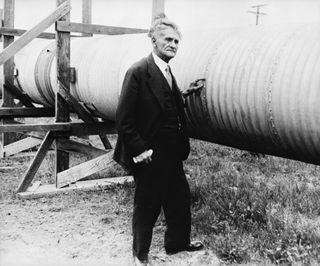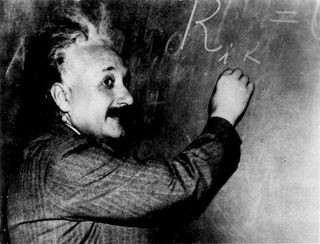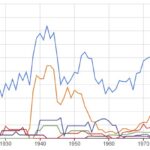Light, a fundamental aspect of the universe, not only illuminates our world but also dictates its very structure. It imposes a speed limit on matter, provides a glimpse into the universe’s history, and has profound implications for physics and space exploration. The question, “How Many Miles Does Light Travel In A Second?”, opens a gateway to understanding these implications.
The speed of light in a vacuum is precisely 299,792,458 meters per second, which translates to approximately 186,282 miles per second. This universal constant, represented by “c” in equations, is a cornerstone of modern physics.
 Abstract, futuristic image of blue light streaks radiating outward, giving the impression of rapid movement or traveling at high speed, inspired by the concept of faster-than-light travel
Abstract, futuristic image of blue light streaks radiating outward, giving the impression of rapid movement or traveling at high speed, inspired by the concept of faster-than-light travel
According to Albert Einstein’s theory of special relativity, nothing in the universe can surpass the speed of light. As matter approaches this speed, its mass approaches infinity, effectively making the speed of light a cosmic speed limit. This immutable speed is so fundamental that the U.S. National Institute of Standards and Technology uses it to define international standard measurements, including the meter, mile, foot, and inch. It also plays a crucial role in defining the kilogram and the Kelvin temperature scale.
The Immense Scale of a Light-Year
To grasp the sheer magnitude of the speed of light, it’s helpful to consider the concept of a light-year. A light-year is the distance light travels in one year, equivalent to about 6 trillion miles (10 trillion kilometers).
- Moon: Light takes approximately 1 second to travel from the Moon to Earth.
- Sun: Sunlight reaches Earth in about 8 minutes.
- Alpha Centauri: Light from Alpha Centauri, the closest star system to us, takes roughly 4.3 years to arrive.
NASA’s Glenn Research Center illustrates the scale of a light-year by stating that if you laid the Earth’s circumference (24,900 miles) in a straight line and multiplied that length by 7.5 (equaling one light-second), then placed 31.6 million similar lines end-to-end, the resulting distance would be almost 6 trillion miles.
Traveling one light-year would take a modern airplane over a million years.
Stars and other cosmic objects reside at distances ranging from a few light-years to billions of light-years away. When astronomers observe distant objects, they are essentially looking back in time, seeing the light emitted from those objects as they existed when the light first departed.
 Galileo Galilei is credited with discovering the first four moons of Jupiter.
Galileo Galilei is credited with discovering the first four moons of Jupiter.
This principle allows astronomers to study the universe as it appeared shortly after the Big Bang, approximately 13.8 billion years ago. Objects 10 billion light-years away are observed as they were 10 billion years ago, offering insights into the universe’s early stages.
Unraveling the History of Light Speed Measurement
The quest to understand the speed of light has spanned centuries, with contributions from numerous scientists and philosophers.
- Early Philosophers: In ancient Greece, Empedocles believed light traveled at a certain speed, while Aristotle argued it was instantaneous.
- Galileo Galilei: In the mid-1600s, Galileo attempted to measure the speed of light using lanterns over a short distance, but his experiment only revealed that light traveled at least ten times faster than sound.
- Ole Rømer: In the 1670s, Danish astronomer Ole Rømer, while creating a timetable for Jupiter’s moon Io, noticed discrepancies in the eclipse timings. He deduced that light took measurable time to travel from Io to Earth, estimating the speed of light at about 124,000 miles per second (200,000 km/s).
- James Bradley: In 1728, English physicist James Bradley refined the calculation based on the apparent position change of stars due to Earth’s orbit, estimating the speed of light at 185,000 miles per second (301,000 km/s), accurate to within 1%.
- Hippolyte Fizeau and Leon Foucault: In the mid-1800s, French physicists Hippolyte Fizeau and Leon Foucault independently used terrestrial experiments involving rotating wheels and mirrors to achieve even more accurate measurements, within about 1,000 miles per second (1,609 km/s) of the actual speed.
 Dr. Albert A. Michelson stands next to a large tube supported by wooden beams.
Dr. Albert A. Michelson stands next to a large tube supported by wooden beams.
- Albert A. Michelson: Albert A. Michelson dedicated much of his career to measuring the speed of light with increasing precision. His 1879 experiment yielded a result of 186,355 miles per second (299,910 km/s), considered the most accurate for 40 years. He later conducted experiments using mountain tops and a mile-long vacuum tube to further refine the measurement. Ironically, Michelson also disproved the existence of luminiferous aether.
Einstein’s Revolution: Special Relativity and Light Speed
 Albert Einstein writing on a blackboard.
Albert Einstein writing on a blackboard.
Einstein’s theory of special relativity revolutionized our understanding of the speed of light. His famous equation, E=mc^2, unified energy, matter, and the speed of light, demonstrating the inherent energy within mass.
Einstein asserted that light travels through a vacuum at a constant speed, independent of the observer’s motion. This principle has profound implications:
- Mass and Speed Limit: Objects with mass cannot reach the speed of light because their mass would become infinite, requiring infinite energy to move.
- Universal Constant: The speed of light is the universe’s ultimate speed limit, an immutable constant that governs the interactions of matter and energy.
Beyond the Limit: Expanding Universe and Light
While the speed of light is the local speed limit, the universe itself expands faster. The universe expands at a rate of approximately 42 miles (68 kilometers) per second for each megaparsec (3.26 million light-years) of distance.
At extreme distances, the expansion rate exceeds the speed of light. This doesn’t violate special relativity because the expansion occurs on a cosmic scale, governed by general relativity, which allows for different behaviors when examining non-local phenomena.
The Variable Nature of Light Speed
While the speed of light in a vacuum is constant, it can be slowed down when passing through a medium. The refractive index of a material determines how much it slows light.
For instance, light travels almost as fast through Earth’s atmosphere as in a vacuum, but it slows significantly when passing through a diamond, reaching less than half its typical speed.
Scientists have even trapped and stopped light in ultra-cold atom clouds and slowed it down in a vacuum, demonstrating the complex interplay between light and matter.
The Allure of Faster-Than-Light Travel
The concept of faster-than-light (FTL) travel fuels science fiction, enabling interstellar journeys and connecting distant worlds. While seemingly impossible, theoretical physicists explore avenues to circumvent the speed limit.
One idea involves manipulating space-time, creating a warp bubble around a spaceship. Instead of moving the ship faster than light, this concept involves warping space itself, allowing the ship to traverse vast distances instantaneously.
Without the possibility of FTL travel, the vastness of the universe would remain largely inaccessible to humanity.
The speed of light is a universal constant that underpins our understanding of the cosmos. While it remains the ultimate speed limit, ongoing research and theoretical explorations continue to push the boundaries of what we know about light, space, and the possibilities of future exploration. Understanding “how many miles does light travel in a second” provides a crucial foundation for these explorations.
Further Exploration
- Visualize the speed of light with Academo’s tool: https://academo.org/demos/speed-of-light-visualizer/
- Explore universal constants at the National Institute of Standards and Technology: https://www.nist.gov/si-redefinition/turning-point-humanity-redefining-worlds-measurement-system
- Delve into the history of light speed in “Lightspeed: The Ghostly Aether and the Race to Measure the Speed of Light” by John C. H. Spence.
References
Aristotle. “On Sense and the Sensible.” The Internet Classics Archive, 350AD. http://classics.mit.edu/Aristotle/sense.2.2.html.
D’Alto, Nick. “The Pipeline That Measured the Speed of Light.” Smithsonian Magazine, January 2017. https://www.smithsonianmag.com/air-space-magazine/18_fm2017-oo-180961669/.
Fowler, Michael. “Speed of Light.” Modern Physics. University of Virginia. Accessed January 13, 2022. https://galileo.phys.virginia.edu/classes/252/spedlite.html#Albert%20Abraham%20Michelson.
Giovannini, Daniel, Jacquiline Romero, Václav Potoček, Gergely Ferenczi, Fiona Speirits, Stephen M. Barnett, Daniele Faccio, and Miles J. Padgett. “Spatially Structured Photons That Travel in Free Space Slower than the Speed of Light.” Science, February 20, 2015. https://www.science.org/doi/abs/10.1126/science.aaa3035.
Goldzak, Tamar, Alexei A. Mailybaev, and Nimrod Moiseyev. “Light Stops at Exceptional Points.” Physical Review Letters 120, no. 1 (January 3, 2018): 013901. https://doi.org/10.1103/PhysRevLett.120.013901.
Hazen, Robert. “What Makes Diamond Sparkle?” PBS NOVA, January 31, 2000. https://www.pbs.org/wgbh/nova/article/diamond-science/.
“How Long Is a Light-Year?” Glenn Learning Technologies Project, May 13, 2021. https://www.grc.nasa.gov/www/k-12/Numbers/Math/Mathematical_Thinking/how_long_is_a_light_year.htm.
American Physical Society News. “July 1849: Fizeau Publishes Results of Speed of Light Experiment,” July 2010. http://www.aps.org/publications/apsnews/201007/physicshistory.cfm.
Liu, Chien, Zachary Dutton, Cyrus H. Behroozi, and Lene Vestergaard Hau. “Observation of Coherent Optical Information Storage in an Atomic Medium Using Halted Light Pulses.” Nature 409, no. 6819 (January 2001): 490–93. https://doi.org/10.1038/35054017.
NIST. “Meet the Constants.” October 12, 2018. https://www.nist.gov/si-redefinition/meet-constants.
Ouellette, Jennifer. “A Brief History of the Speed of Light.” PBS NOVA, February 27, 2015. https://www.pbs.org/wgbh/nova/article/brief-history-speed-light/.
Shea, James H. “Ole Ro/Mer, the Speed of Light, the Apparent Period of Io, the Doppler Effect, and the Dynamics of Earth and Jupiter.” American Journal of Physics 66, no. 7 (July 1, 1998): 561–69. https://doi.org/10.1119/1.19020.
Siegel, Ethan. “The Failed Experiment That Changed The World.” Forbes, April 21, 2017. https://www.forbes.com/sites/startswithabang/2017/04/21/the-failed-experiment-that-changed-the-world/.
Stern, David. “Rømer and the Speed of Light,” October 17, 2016. https://pwg.gsfc.nasa.gov/stargaze/Sun4Adop1.htm.
